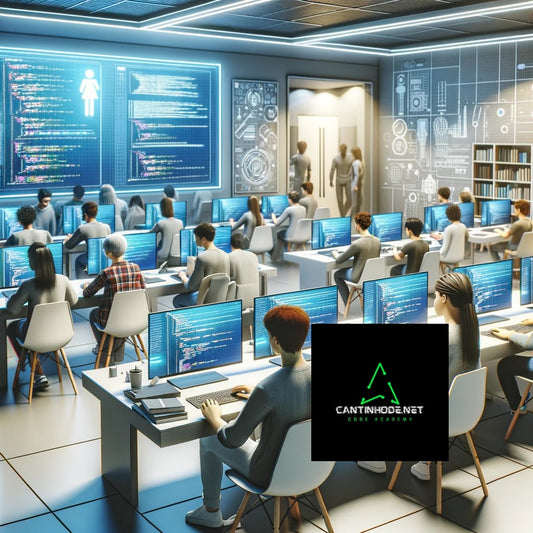The IT industry is in a constant state of evolution. With rapid advancements in technology, IT professionals must continually update their skills to stay relevant and effective in their roles. Upskilling has become a critical component of professional development, enabling individuals to transition from traditional IT activities to emerging technology areas. This article explores why upskilling is essential and compares traditional IT domains with new, innovative fields.
Why Upskilling is Crucial
1. Rapid Technological Advancements: The pace at which technology evolves necessitates continuous learning. What was cutting-edge yesterday may be obsolete tomorrow.
2. Increased Employability: Employers seek professionals adept in the latest technologies. Upskilling enhances job prospects and career advancement opportunities.
3. Addressing Skill Gaps: As new technologies emerge, skill gaps widen. Upskilling helps bridge these gaps, making professionals valuable assets to their organizations.
4. Enhancing Innovation and Efficiency: New skills enable IT professionals to implement innovative solutions and improve operational efficiencies.
5. Job Security: With automation threatening certain job roles, upskilling ensures professionals remain indispensable by acquiring skills that are in demand.
Traditional IT Activity Areas vs. Emerging Technology Areas
Understanding the shift from traditional to new technology areas highlights the importance of upskilling. Below is a comparison of these domains:
Traditional IT Activity Areas
1. On-Premise Infrastructure Management
Focus: Managing physical servers, networking hardware, and data centers located on company premises.
Skills Required: Hardware maintenance, network configuration, system administration.
Limitations: Higher maintenance costs, limited scalability, and less flexibility.
2. Manual Software Deployment
Focus: Manually installing and updating software applications on individual machines or servers.
Skills Required: Scripting basic installations, understanding of operating systems.
Limitations: Time-consuming, prone to errors, and difficult to manage at scale.
3. Traditional Database Management
Focus: Managing relational databases using SQL and traditional database management systems.
Skills Required: SQL proficiency, database design, backup and recovery.
Limitations: Less efficient with unstructured data, scalability issues with large data volumes.
4. Basic Programming
Focus: Writing code in traditional programming languages for specific applications.
Skills Required: Knowledge of languages like Java, C++, or PHP.
Limitations: May not support modern development practices like rapid prototyping or integration with new technologies.
Emerging Technology Areas
1. Cloud Computing and Virtualization
Focus: Utilizing cloud platforms (AWS, Azure, Google Cloud) to host services and applications.
Skills Required: Cloud architecture, virtualization, containerization (Docker, Kubernetes).
Advantages: Scalability, cost-effectiveness, flexibility, and global accessibility.
2. DevOps and Automation
Focus: Integrating development and operations to streamline software delivery through automation.
Skills Required: Continuous integration/continuous deployment (CI/CD), automation tools (Jenkins, Ansible), scripting.
Advantages: Faster deployment cycles, reduced errors, improved collaboration between teams.
3. Data Science and Big Data Analytics
Focus: Analyzing large volumes of structured and unstructured data to derive insights.
Skills Required: Knowledge of big data technologies (Hadoop, Spark), data visualization, machine learning.
Advantages: Informed decision-making, predictive analytics, personalized customer experiences.
4. Cybersecurity and Ethical Hacking
Focus: Protecting systems and networks from digital attacks.
Skills Required: Threat analysis, security protocols, ethical hacking techniques, compliance standards.
Advantages: Safeguards organizational data, builds customer trust, ensures regulatory compliance.
5. Artificial Intelligence and Machine Learning
Focus: Developing systems that can learn and adapt autonomously.
Skills Required: Programming in Python or R, understanding of algorithms, neural networks.
Advantages: Automation of complex tasks, improved efficiency, innovative product development.
The Shift from Traditional to New Areas
The transition from traditional IT roles to emerging technology areas is driven by several factors:
Business Needs: Organizations demand more agile, scalable, and cost-effective solutions.
Technological Innovation: New technologies offer enhanced capabilities that traditional methods cannot match.
Market Competition: Staying ahead requires adopting the latest technologies to improve products and services.
How Upskilling Facilitates This Transition
1. Education and Training Programs: Enrolling in courses, certifications, and workshops focused on new technologies.
2. Hands-On Experience: Engaging in projects that utilize emerging technologies to gain practical knowledge.
3. Professional Networking: Joining industry groups and forums to learn from peers and experts.
4. Staying Informed: Keeping up with industry publications, webinars, and conferences to stay abreast of trends.
Benefits of Embracing New Technology Areas
Enhanced Career Prospects: Professionals skilled in emerging technologies are in high demand.
Increased Earning Potential: Specialized skills often command higher salaries.
Greater Job Satisfaction: Working with cutting-edge technologies can be more engaging and fulfilling.
Contribution to Innovation: Playing a role in developing innovative solutions that can transform industries.
Conclusion
Upskilling is not just about personal career growth; it's about staying relevant in an industry characterized by constant change. The shift from traditional IT activities to new technology areas underscores the need for continuous learning. By bridging the gap between legacy systems and emerging technologies, IT professionals can drive innovation, enhance efficiency, and contribute significantly to their organizations' success. Embracing upskilling ensures that professionals are not left behind but are instead leading the charge into the future of technology.







